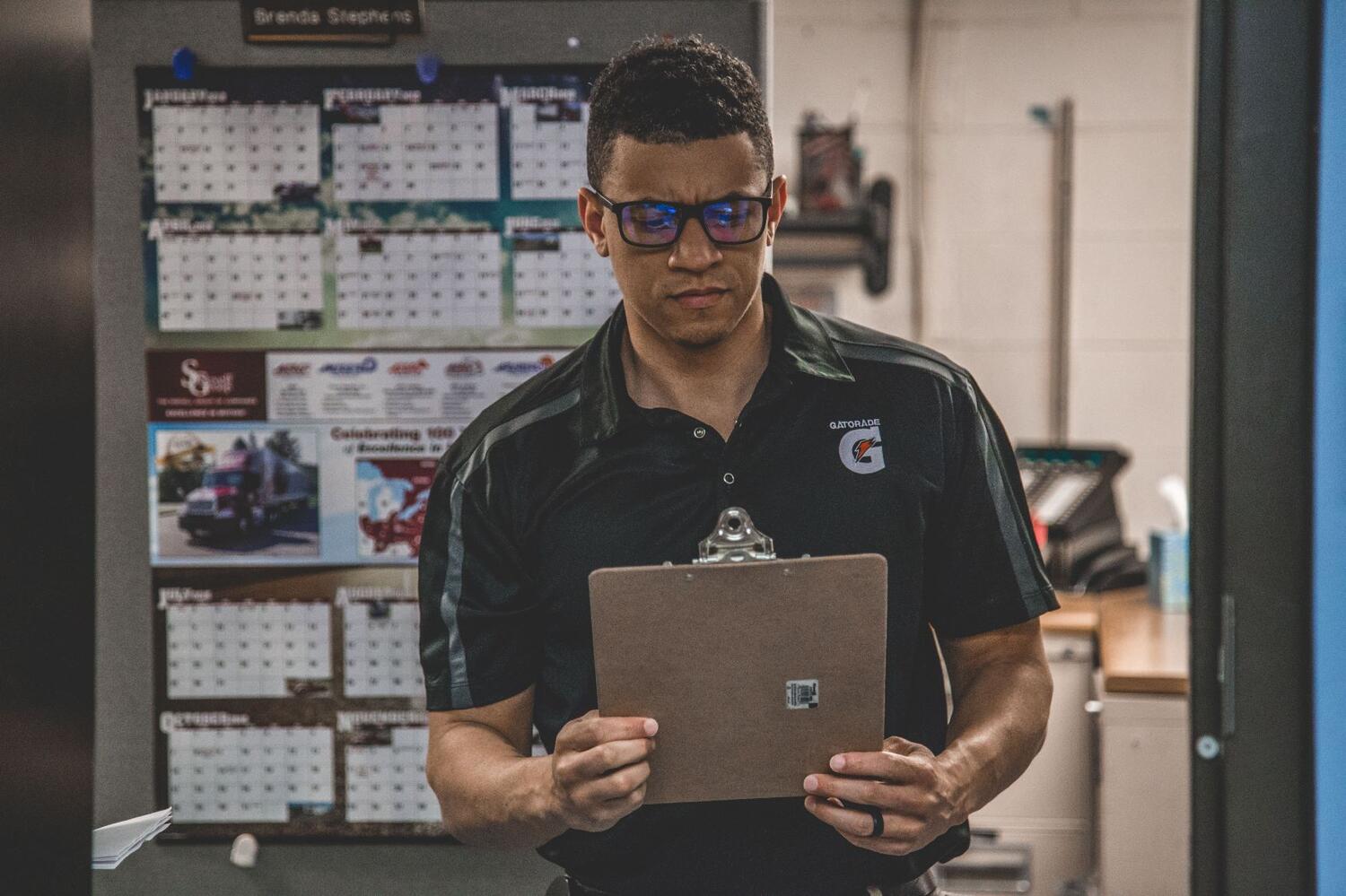
Employee Engagement, Employee Experience, Employee Surveys, Leadership & Management, Trust
Is "action planning" dead?
As someone who has been preaching the value of action planning for years, these words are hard for me to write.
Ask most leaders what comes to mind when they hear the phrase "action planning," and they will likely blurt out some inappropriate words. For the sake of professionalism, I will leave the exact words to your imagination.
How many attempts at action planning have resulted in meaningful change that the leader, team, and organization would describe as being successful?
I've been consulting and advising leaders for longer than I care to admit, and the list of successes is shorter than I wish.
Isn’t it time to stop the madness?
Why Employee Engagement Action Planning Doesn't Work
Before we explore what will work, let's get grounded on why action planning fails:
1. Who has time for this?
Asking a busy leader to develop an action plan is like asking a drowning man to carry another 10lb weight — it feels like an impossible burden. This is not a recipe for success.
2. Language matters
The phrase “action planning” suggests that responding to employee feedback is an exercise in checking boxes and completing tasks. This ignores the root of the real change needed.
3. Leaders focus on what they perceive is the priority
In most organizations, leaders are rewarded for hitting operating goals, business results and customer satisfaction.
When I ask leaders if anyone has followed up with them on their action plans, they often say, "No one has asked me about it." Let's be real – if no one's asking, is it really that important?
4. Is it really "my" problem?
Many leaders don't see the connection between employee survey results and their own leadership. It's easy to disregard the results by blaming external factors: "It's the organization's issue – we are trying to do too much." Or, "It's my manager's problem – if they were more effective, the results would be different."
Many blame internal politics and lack of cooperation across departments and functions. "I can't control or influence this," they think.
5. "Fix it" mentality
Organizations often respond to surveys by creating internal pressure to "do something."
While well-intended, these workplaces usually jump to action rather than take the time to understand the experience underlying the data. This often results in efforts that are more process/task driven than outcomes driven, and miss the the real issue.
How many of us can say we are 'different leaders' as the result of this process?
If this is the experience of most leaders, you can imagine how employees are feeling.
Let's also explore the employee experience of this process. An organization goes through significant effort (and investment) to gauge employee satisfaction.
Maybe this is the third or fourth time employees have completed an engagement survey, and have given the same feedback over and over. To what end? Do they have faith that anything will change? Do they feel heard? Has their feedback even been acknowledged?
Another hard truth – continuing to engage in employee surveys with little action can do more harm than not surveying at all!
If not action planning, then what?
I won't pretend that there is a magic wand to make the process of responding to survey results easy. But I have seen leaders and organizations achieve significant positive outcomes.
For example, let’s look at a financial services firm in the Midwest whose employee engagement survey results were among the best I'd seen. To no one's surprise, the company has been on the Fortune 100 Best Companies to Work For® list for years.
The CEO told me that the company's employee survey results weren't always how they are today. The hardest lesson he learned from the survey response process is that leadership change had to start with him. He viewed the survey results as a reflection of his leadership and said he couldn't expect the rest of his leaders to change if he didn’t change himself.
He proceeded to share the results with his Board, along with a shortlist of behaviors he was going to tackle to become a better leader. He got a coach. And, he even hung his development plan on the door of his office for everyone to see.
Soon his leadership team was all doing the same. The leaders even came up with agreed-upon leadership behaviors that they committed to. They never used the words "action plan" to describe their process. Rather, it had a much more personal tone; it was their "development plan."
The lessons leaders like this CEO have shared with me over time is a shorter list than you might expect. Interestingly, these leaders have some striking similarities. They are humble, they are curious, they are learners, and they are listeners. And they are wildly successful. Here is their advice:
How to Respond to Employee Feedback
1. Take time to process and absorb the feedback
Feedback provides essential insight into our leadership and the experience (intended or unintended) we are creating for employees. It can be hard to hear. It can also be the most valuable if we allow ourselves to learn from it.
Even if feedback is largely positive, human nature is to look for our flaws in the feedback. Good or bad, we have to first start with just taking it in, processing it and giving ourselves a little time to absorb it before going any further.
2. Listen, listen, and listen some more
Employee survey results provide high-level clues of where to dig further. The most effective leaders I've worked with are the ones that get curious. They want to understand the meaning behind the results.
Asking questions, demonstrating curiosity and listening without 'fixing' is a critical step in building understanding, credibility, and trust. So, these leaders create a safe space for dialogue with their team.
Digging deeper to understand what is underlying the experience of your employees allows you to more clearly focus your efforts and develop a deeper relationship with your team.
3. Set your intention – but don't boil the ocean
How do you want your employees to describe your leadership? What kind of leader do you want to be known as? What did you learn from listening to employees that would make the greatest impact that would improve their experience?
When you ask yourself these questions, you might end up with a long list of changes to make — but less is more.
Rather than try to tackle them all at once, identify one area for improvement, and give it your full focus. Share it with your team and ask for their help and suggestions. Get an accountability partner that will provide you with honest insight and support. Be open with employees about the change you are making and get regular, ongoing feedback
4. Respond to employee feedback with the same urgency and attention as customer feedback
Talk with leaders who are fanatical about customer service and they will tell you that it boils down to three things:
- Really listen and understand your customer's needs and experience
- Let them know what you are going to do and follow through by doing it
- Tell them what you did and why their experience and feedback matter to you (the value you place on the relationship)
Leaders who excel at customer service put this at the forefront of everything they focus on, talk about and measure.
These are precisely the same principles followed by leaders who are fanatical about providing a high-trust, high-performance work environment that maximizes the full potential of every employee.
5. Keep it in focus
Is employee experience on every regular meeting agenda? Are leaders routinely asked about their development in this area? Just like financial performance, quality performance or any other meaningful organizational measure, employee experience must be an ongoing priority at every level of the organization.
We improve what is measured, we develop what we talk about the most and we promote what we are held accountable for.
A distinction of great workplaces is real clarity about what it means to be a great leader in their organization. They hire, train and promote for this. Leadership is measured, talked about and made a priority. Leaders are held accountable. All these elements must be in place to create a great company culture.
As we all know, life is short and we spend more time at work than anywhere else. Everyone deserves to be in an environment where they can bring their full selves and contribute to a higher purpose. It goes without saying that leaders who create great workplaces are better for people, better for business and better for the world!
Need to understand want kind of employee experience you are creating? Learn more about how our employee survey and culture management platform can help your business today.










